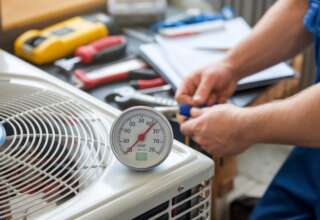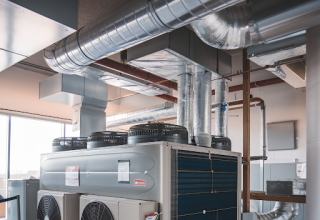When you’re house starts to look a little tired you know it’s time to get the paintbrush out. Painting a house is a time-consuming task and one that you’ll need to repeat every 3-5 years. Of course, you’ll also need to maintain the walls and repair any issues.
That’s why so many people choose to clad their homes. Cladding offers protection to the existing walls. Although there are many different types of cladding they are all easy to fasten to the walls and create a beautiful finish in a surprisingly short space of time.
But, most importantly, they don’t just protect your walls, they also offer better insulation which can reduce your energy bills. In addition, cladding is extremely easy to maintain, especially UPVC cladding.
What Is UPVC Cladding?
Anything that goes over the existing walls of your home can be considered cladding. This means covering the walls in a sand and cement mix, often referred to as rendering, is effectively cladding.
In fact, there are many different types of cladding options, the most common ones are UPVC, wood, brick, stone, and metal.
Obviously, UPVC cladding is made from UPVC. But, not all UPVC cladding is of the same quality. A great example of this is the native Palliside cladding. This is UPVC but 7 tiles as thick as traditional, or cheaper alternatives. It is also foam backed.
The result is better insulation than traditional cladding and more durability. Palliside cladding will outlast other options, especially if you’re living in an area that has big differences in the weather.
It’s also worth noting that most UPVC cladding is now made from recycled materials, making it a surprisingly green option. Of course, if you’re concerned about the environment, you’ll need to verify this before you purchase any cladding.
The Benefits
We’ve already mentioned that UPVC cladding can help you to reduce your energy bills, this is especially true of Palliside cladding as it has a foam backing. But there are also several other benefits that you should be aware of.
-
Maintenance Free
Once the cladding is in place you’ll find there is little you need to do. It’s a good idea to power wash the walls every year, using a dedicated cleaning product. This will remove any mold or other substances on the cladding.
You’ll also need to visually inspect it regularly to ensure it’s not been damaged. If it has, you’ll need to repair that area. But, that’s about all you need to do!
-
Choice Of Colors & Finishes
UPVC cladding can be created in virtually any color or style of finish you can think of. This means you can have the practicality of cladding and the finish on your hole that you’ve always dreamed of.
-
Durability
You should also note that UPVC cladding is very durable. It can stand up to the elements virtually effortlessly and will remain attached to your house for years to come, protecting it.
-
Water Barrier
UPVC cladding offers an effective barrier to moisture although it is not strictly waterproof. However, if it is fitted properly there will be a moisture barrier included, effectively keeping moisture out of your home. That’s a good thing.











